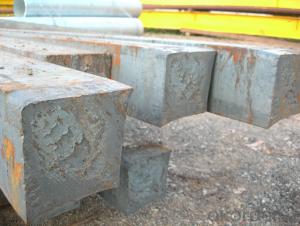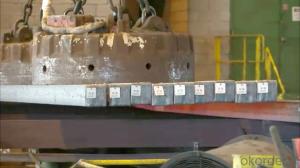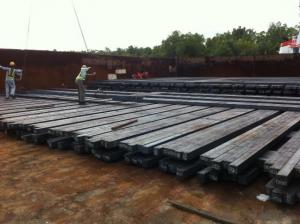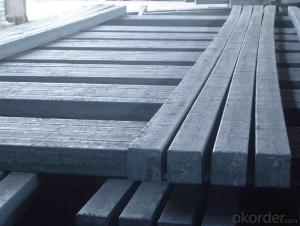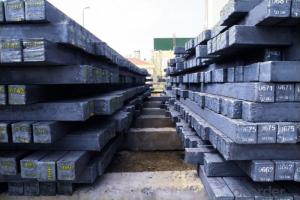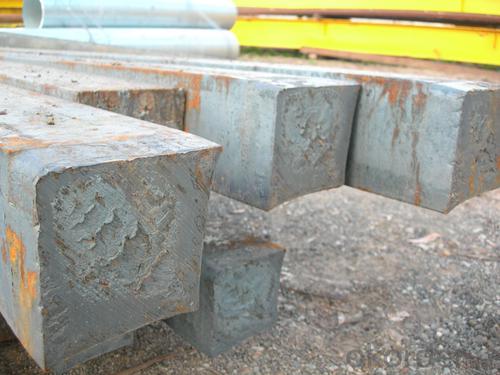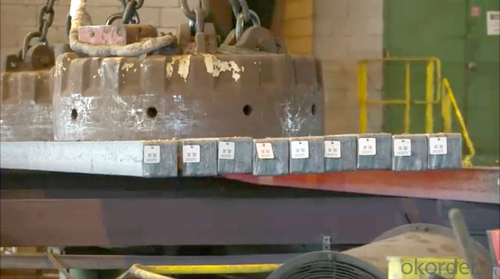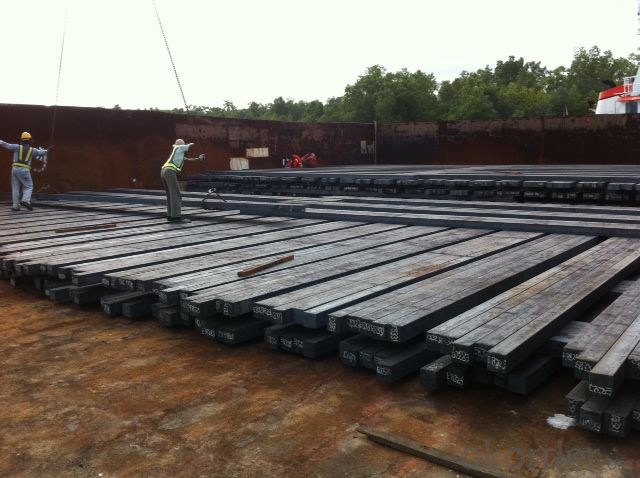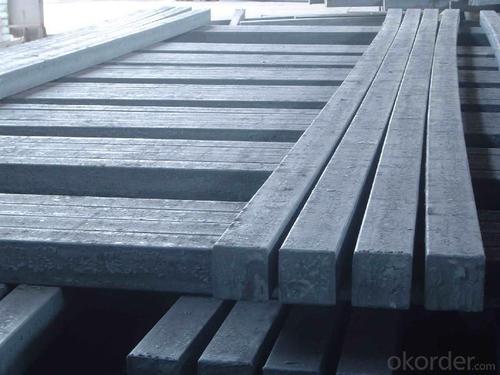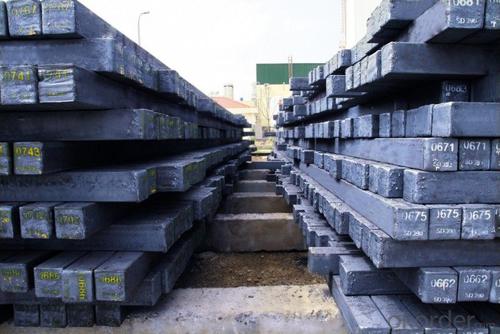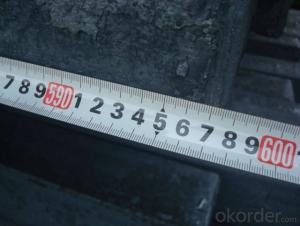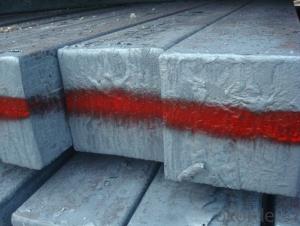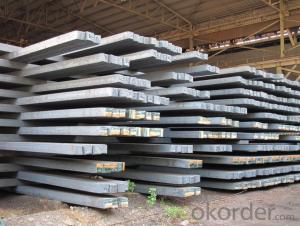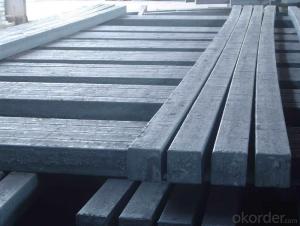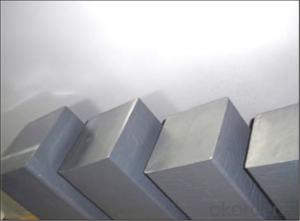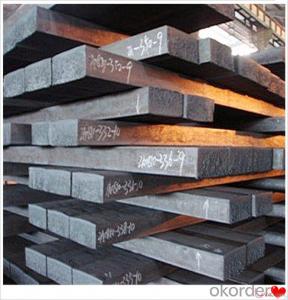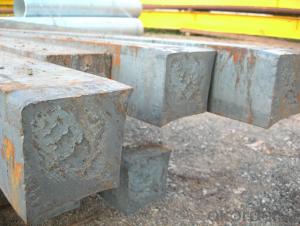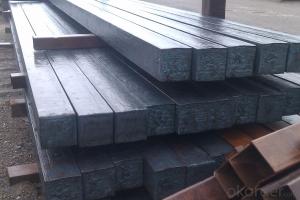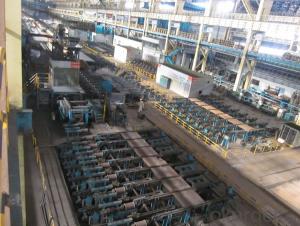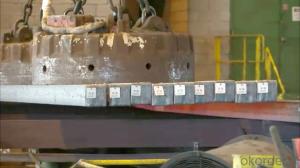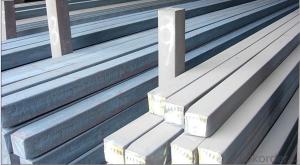Prime quality square alloy steel billet 140mm Q235
- Loading Port:
- Tianjin
- Payment Terms:
- TT OR LC
- Min Order Qty:
- 100 m.t.
- Supply Capability:
- 10000 m.t./month
OKorder Service Pledge
OKorder Financial Service
You Might Also Like
Structure of Prime quality square alloy steel billet 140mm Q235
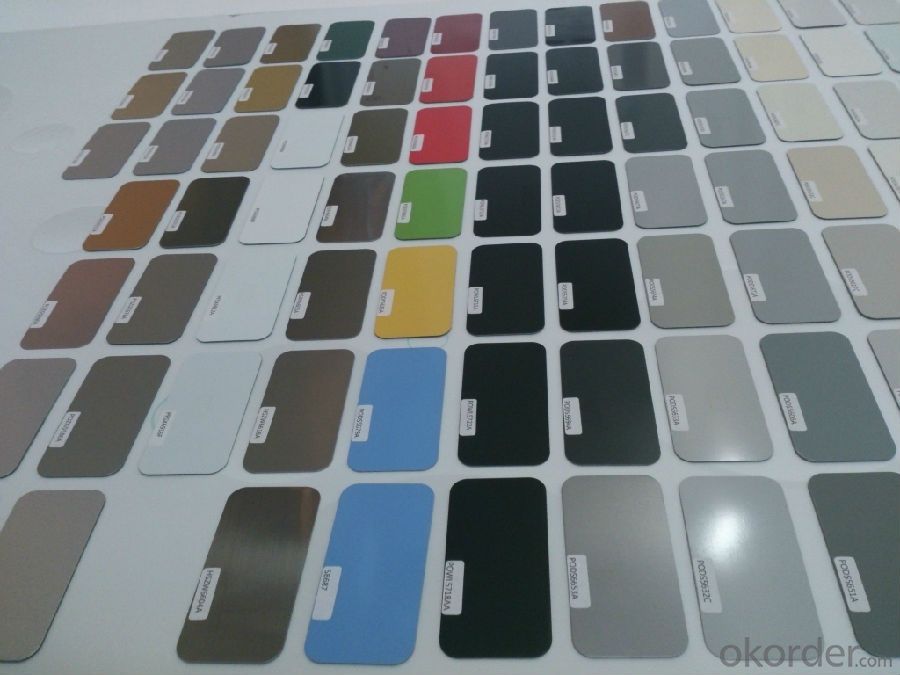
Description of Prime quality square alloy steel billet 140mm Q235
1. Prepainted steel coil is coated with organic layer, which provides higher anti-corrosion property and a longer lifespan than that of galvanized or galvalume steel sheets.
2. The base metals for prepainted steel coil consist of cold rolled, HDGI Steel, electro-galvanized and hot-dip alu-zinc coated steel. The finish coats of prepainted steel coil can be classified into groups as follows: polyester, silicon modified polyesters, polyvinylidene fluoride, high-durability polyester, etc.
3. The production process has evolved from one-coating-and-one-baking to double-coating-and-double-baking, and even three-coating-and-three-baking.
4. The color of the prepainted steel coil has a very wide selection, like orange, cream-colored, dark sky blue, sea blue, bright red, brick red, ivory white, porcelain blue, etc.
5. The prepainted steel coils can also be classified into groups by their surface textures, namely regular prepainted sheets, embossed sheets and printed sheets.
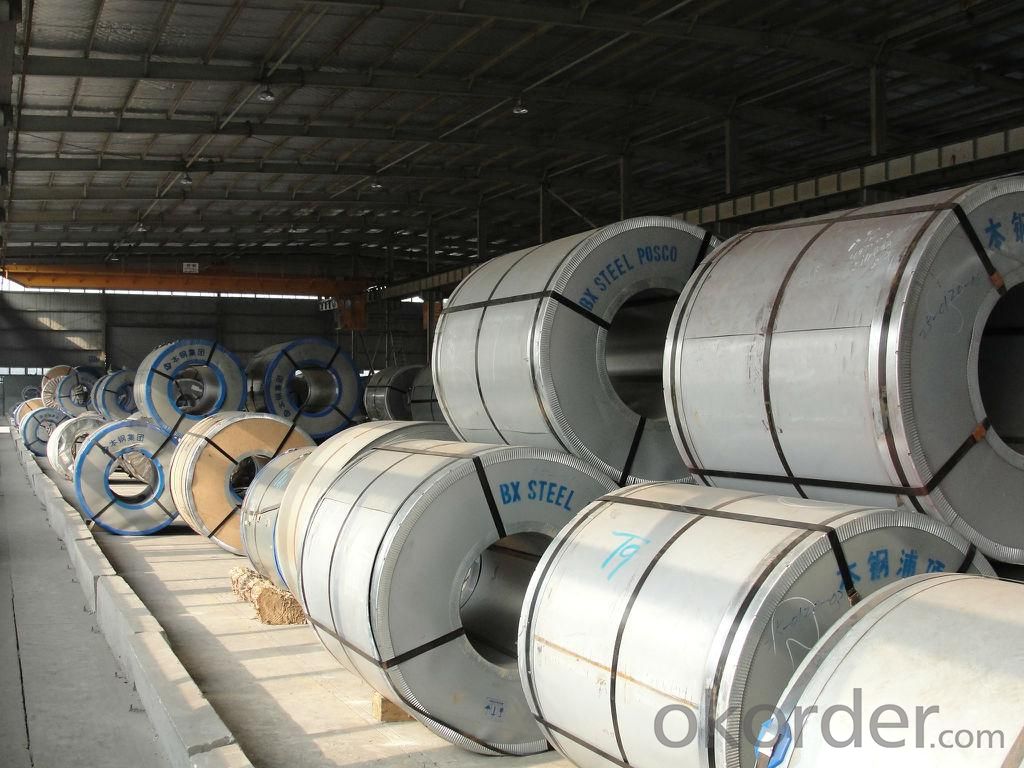
Main Feature of Prime quality square alloy steel billet 140mm Q235
Uncoated CR steel sheet
With the features of in line with the international highest standards in demension and shape, excellent surface finish and properties, the products are mainly used in home appliance and automobile industries.
Galvanized steel sheet(include HDG and EG)
With the features of good corrosion resistance, the products are mainly used in automobile, home appliance, electronics, building and machinery manufacture industries, etc.
Precoated steel sheet
With the features of enviromental protection and good processablility, long lasting surface durability, rich in colors, the products are maily used in building, home appliance and furniture industries, etc.
Applications of Prime quality square alloy steel billet 140mm Q235
Construction
Manufacture anticorrosion, industrial and civil architecture roof boarding, roof grille
Light industries
Home appliance's case, civil chimney, kitchen utensils
Auto industry
Corrosion resistant parts of cars
Agriculture
Food storage, meat and aquatic products' freezing and processing equipment
Commerce
Equipments to store and transport materials, and packing implements
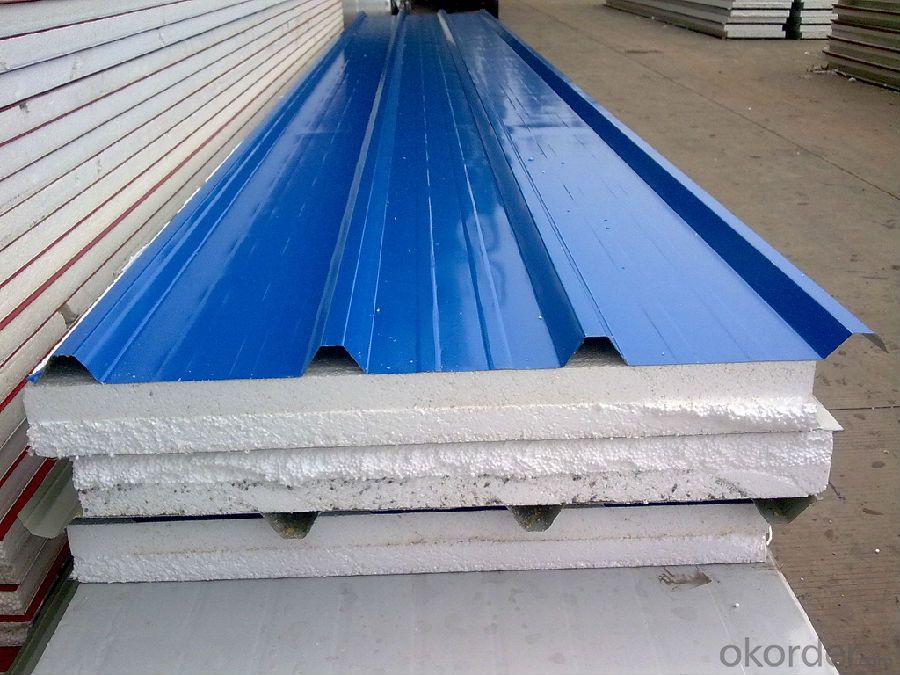
Specifications of Prime quality square alloy steel billet 140mm Q235
Product | Prime quality square alloy steel billet 140mm Q235 |
Material Grade | SGCC / SGCH / DX51D+AZ, etc |
Thickness | 0.6-3.0mm |
Width | 500-1500mm |
Tolerance | Thickness: +/-0.02mm , Width:+/-2mm |
Zinc-coating | Z30-150g/m2 |
Technique | Raw material: Hot rolled steel coil --> Cold rolled_>hot dipped galvalume |
Surface | Dried, Chromated, Unoiled |
Spangle | Regular spangle , small spangle, zero spangle |
ID | 508MM 610MM |
Coil weight | 1-25MT |
Export package | Cardboard inner sleeves, Waterproof paper, galvanized steel covered and steel strip packed |
FAQ of Prime quality square alloy steel billet 140mm Q235
We have organized several common questions for our clients,may help you sincerely:
1. How Can I Visit There?
Our company is located in Tianjin City, China, near Beijing. You can fly to Tianjin Airport Directly. All our clients, from home or aboard, are warmly welcome to visit us!
2. How Can I Get Some Sample?
We are honored to offer you sample.
3. Why choose CNBM?
Our delivery time about 15-20days for standard sizes, if you have other requirements like hardness, quanity and width ,it is about 20-40days. But don't worry we also try our best for the delivery time ,because time longer and our cost is higher.
- Q: Can steel billets be painted or coated for decorative purposes?
- Yes, steel billets can be painted or coated for decorative purposes. The surface of steel billets can be prepared and treated to ensure proper adhesion of paint or coating, allowing for customization and enhancing their appearance for decorative applications.
- Q: What are the different methods of steel billet surface coating?
- There are several methods of steel billet surface coating, including hot-dip galvanizing, electroplating, powder coating, and thermal spray coating.
- Q: How are steel billets inspected for defects?
- Steel billets are inspected for defects using various non-destructive testing methods such as visual inspection, ultrasonic testing, magnetic particle inspection, and eddy current testing. These techniques help identify surface cracks, internal flaws, and other defects that may compromise the quality and integrity of the steel billets.
- Q: What are the specifications for alloy steel billets used in the defense industry?
- The specifications for alloy steel billets used in the defense industry typically include requirements for high strength, durability, and resistance to corrosion and impact. Additionally, they may specify the alloy composition, heat treatment processes, dimensional tolerances, and surface finish, among other parameters, to ensure the billets meet the specific performance needs of defense applications.
- Q: What is the role of steel billets in the construction of bridges?
- Steel billets play a critical role in the construction of bridges. These long, rectangular bars of steel are often used as raw material to produce various structural components of a bridge. One of the primary uses of steel billets in bridge construction is for the fabrication of beams and girders. These components provide the necessary support and load-bearing capacity to ensure the bridge can withstand the weight of vehicles, pedestrians, and other loads. Steel billets are heated and then rolled into the desired shape to create these structural elements, which are subsequently welded or bolted together to form the bridge's framework. Additionally, steel billets are also used to produce reinforcement bars, commonly known as rebar. Rebar is essential in providing tensile strength to concrete structures, including bridge foundations, piers, and abutments. By reinforcing the concrete with steel billets in the form of rebar, bridges can withstand the forces caused by heavy traffic, wind, and other external factors. The use of steel billets in bridge construction offers several advantages. Firstly, steel is incredibly strong and has a high strength-to-weight ratio, making it an ideal material for bridges. Steel billets can withstand heavy loads and provide the necessary structural integrity, ensuring the longevity and durability of the bridge. Moreover, steel is highly resistant to corrosion, which is crucial for bridges exposed to harsh weather conditions and environmental factors. Corrosion can weaken the structure of a bridge, compromising its safety and longevity. However, by using steel billets, which can be coated or galvanized to enhance corrosion resistance, bridges can maintain their structural integrity over an extended period. In conclusion, steel billets play a vital role in the construction of bridges. They are used to fabricate beams, girders, and rebar, providing the necessary strength, support, and durability to withstand heavy loads and external forces. Steel billets contribute to the overall safety, longevity, and functionality of bridges, making them a critical component in bridge construction.
- Q: Can the production of continuous casting billet be damaged by using intermediate frequency electric furnace?
- No, as long as the quality of the billet is OK
- Q: What are the different types of steel billets available?
- There are several different types of steel billets available, including carbon steel billets, alloy steel billets, stainless steel billets, and tool steel billets. Each type has its own unique properties and is used for various applications across industries such as construction, automotive, and manufacturing.
- Q: What are the different types of mechanical property testing methods for steel billets?
- Some different types of mechanical property testing methods for steel billets include tensile testing, hardness testing, impact testing, and fatigue testing. Tensile testing measures the strength and ductility of the material by applying a pulling force until it breaks. Hardness testing measures the resistance of the material to penetration or indentation. Impact testing evaluates the material's ability to absorb energy under high rates of loading. Fatigue testing assesses the material's resistance to failure under cyclic loading conditions.
- Q: How are steel billets used in the manufacturing of electrical transmission equipment?
- Steel billets are often used as raw material in the manufacturing of electrical transmission equipment. They are typically forged or machined to create various components such as brackets, supports, and housings. These billets provide the necessary strength, durability, and dimensional stability required for the equipment to withstand high electrical loads and harsh operating conditions.
- Q: What are the different heat treatment processes applied to steel billets?
- Steel billets can undergo various heat treatment processes to achieve specific properties and characteristics in the final product. Common processes include: 1. Annealing: Steel billets are heated to high temperatures and then slowly cooled, often in a controlled atmosphere or furnace. This relieves internal stresses, enhances machinability, and improves ductility and toughness. 2. Normalizing: Steel billets are heated above the critical range and then air-cooled. This process refines the grain structure, improves mechanical properties, and enhances machinability. 3. Quenching: Steel billets are rapidly cooled by immersing them in a quenching medium (e.g., water, oil, or polymer) after being heated to high temperatures. This creates a hardened and stronger steel with improved wear resistance, but brittleness may increase. 4. Tempering: After quenching, hardened steel billets are reheated to a specific temperature and then cooled in still air. Tempering relieves residual stresses, reduces brittleness, and improves toughness and ductility. 5. Austempering: Steel billets are quenched in a molten salt bath or another medium just above the critical range and held at that temperature until the desired transformation occurs. Austempering results in high strength, improved ductility, and reduced distortion. 6. Martempering: Similar to austempering, martempering involves a shorter holding time at the quenching temperature. This process produces a steel with high strength, toughness, and reduced distortion. 7. Case hardening: Carbon is added to the surface layer of steel billets through carburizing or nitriding. This forms a hardened case with increased wear resistance while maintaining a more ductile core. These examples illustrate some of the heat treatment processes applicable to steel billets. The specific process chosen depends on the desired properties of the final product and the type of steel being treated.
Send your message to us
Prime quality square alloy steel billet 140mm Q235
- Loading Port:
- Tianjin
- Payment Terms:
- TT OR LC
- Min Order Qty:
- 100 m.t.
- Supply Capability:
- 10000 m.t./month
OKorder Service Pledge
OKorder Financial Service
Similar products
Hot products
Hot Searches
Related keywords
